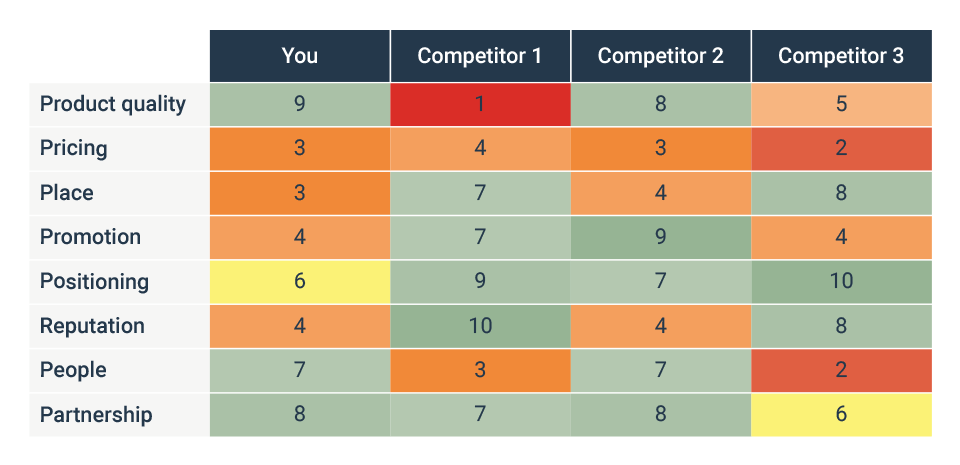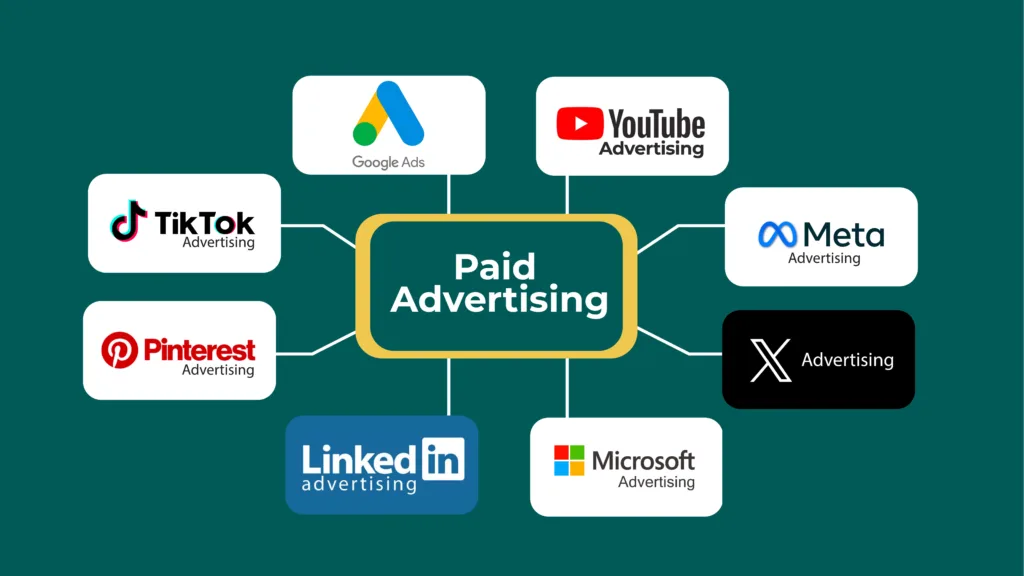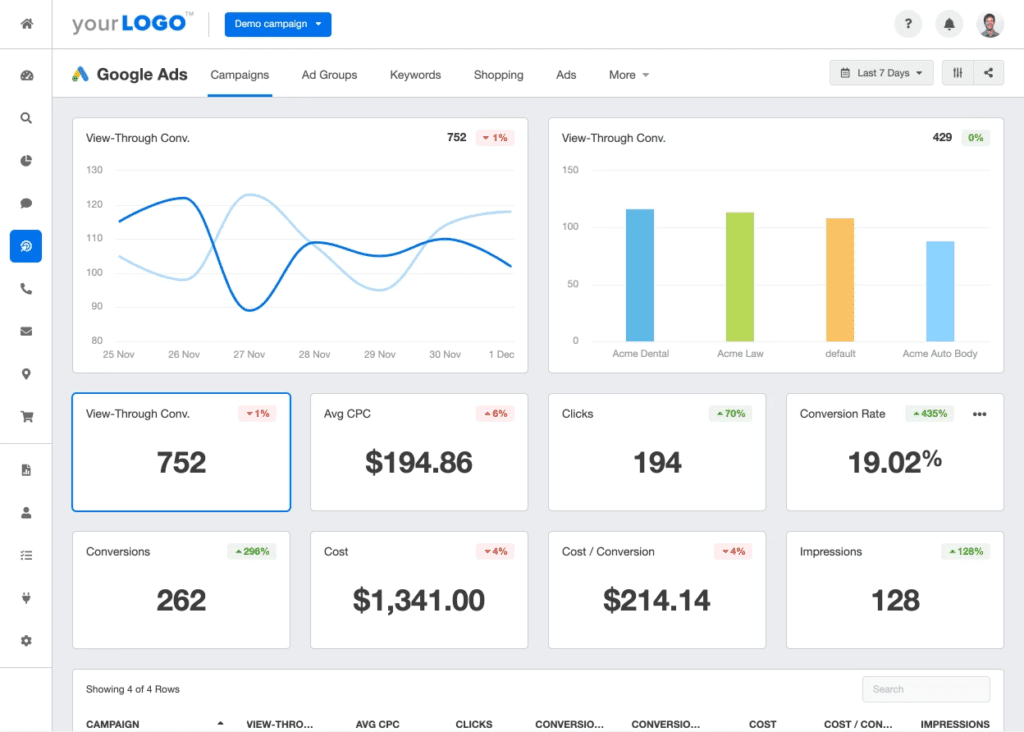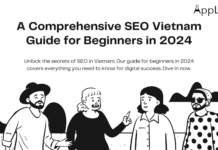Key Takeaways
- Strategic Diversification: Malaysian online retailers must diversify their paid advertising strategies across platforms like Google Ads, Facebook, and emerging channels to maximize visibility and engagement.
- Cultural Resonance Matters: Adapting content to local nuances, embracing festivals, and incorporating diverse visuals are crucial for building connections with the Malaysian audience, and enhancing campaign effectiveness.
- Future-Proofing Through Innovation: Stay ahead in the competitive landscape by embracing emerging trends such as AI integration, augmented reality, and social commerce, ensuring long-term success in the evolving Malaysian e-commerce realm.
In the bustling digital landscape of Malaysia, where online retail is rapidly gaining prominence, mastering the art of Paid Advertising Strategies has become a pivotal necessity for e-commerce success.
With the increasing number of consumers turning to the Internet for their shopping needs, the competition among Malaysian online retailers has intensified, making it crucial for businesses to not only establish a robust online presence but also employ effective paid advertising strategies that cut through the digital noise.
This comprehensive guide aims to be your beacon in navigating the intricate world of paid advertising, tailored specifically for Malaysian online retailers.
As we delve into the intricacies of this dynamic market, we’ll unravel the nuances of consumer behavior, explore the multifaceted channels available for advertising, and dissect the cultural considerations that can significantly impact the success of your campaigns.

Understanding the Malaysian Market Dynamics
Malaysia, with its diverse demographics and unique consumer habits, presents both challenges and opportunities for online retailers.
In the first section of this guide, we’ll conduct a deep dive into the Malaysian market, deciphering the intricacies of consumer behavior, analyzing market trends, and undertaking a comprehensive competitor analysis.
By understanding the pulse of the Malaysian e-commerce space, you’ll be better equipped to tailor your paid advertising strategies for maximum impact.
Unveiling the Arsenal: Types of Paid Advertising Channels
The arsenal of paid advertising channels is vast, and each comes with its own set of advantages and intricacies.
In this section, we’ll shine a spotlight on the powerhouses of online advertising for Malaysian retailers.
From the intricacies of Google Ads, including effective keyword research and ad targeting, to harnessing the potential of Facebook Ads and Instagram Ads, we’ll guide you through the maze of options.
Budgeting and ROI Mastery
Effective paid advertising is not just about spending money; it’s about strategically allocating resources to maximize returns.
In this section, we’ll equip you with the knowledge to set realistic advertising budgets, calculate and measure ROI for your campaigns, and make data-driven adjustments to optimize your strategies.
Whether you’re a startup or an established e-commerce giant, understanding the financial dynamics of paid advertising is crucial for sustainable growth.
Adapting to Local Cultural Nuances
Culture plays a pivotal role in shaping consumer preferences and responses to advertising. To truly resonate with your Malaysian audience, it’s imperative to adapt your advertising strategies to local cultural nuances.
From tailoring ad content to incorporating regional holidays and events, we’ll guide you through the process of creating culturally relevant campaigns that forge a genuine connection with your target audience.
As we embark on this journey through the intricacies of Paid Advertising Strategies for Malaysian Online Retailers, prepare to unlock a treasure trove of insights, strategies, and practical tips that will elevate your advertising game.
Whether you’re a seasoned e-commerce professional or just venturing into the world of online retail, this guide is crafted to be your companion in navigating the ever-evolving landscape of digital advertising in Malaysia.
Get ready to transform your online presence and propel your business to new heights.
But, before we venture further, we like to share who we are and what we do.
About AppLabx
From developing a solid marketing plan to creating compelling content, optimizing for search engines, leveraging social media, and utilizing paid advertising, AppLabx offers a comprehensive suite of digital marketing services designed to drive growth and profitability for your business.
AppLabx is well known for helping companies and startups in Malaysia use paid advertising to drive web traffic to their websites and web apps.
At AppLabx, we understand that no two businesses are alike. That’s why we take a personalized approach to every project, working closely with our clients to understand their unique needs and goals, and developing customized strategies to help them achieve success.
If you need a digital consultation, then send in an inquiry here.
Paid Advertising Strategies for Malaysian Online Retailers
- Understanding the Malaysian Market
- Types of Paid Advertising Channels
- Budgeting and ROI
- Adapting to Local Cultural Nuances
- Future Trends and Emerging Platforms
1. Understanding the Malaysian Market
In the vibrant tapestry of Malaysian e-commerce, comprehending the intricacies of the market is the first step toward crafting effective paid advertising strategies.
This section will explore the demographics, consumer behaviour, and competitive landscape that shape the online retail scene in Malaysia.

Demographics and Consumer Behavior
- Demographic Diversity:
- Malaysia boasts a diverse population with various ethnic groups, including Malay, Chinese, Indian, and others. Understanding this diversity is crucial for tailoring advertising messages that resonate with different segments of the population.
- Digital Adoption Rates:
- The internet penetration rate in Malaysia reached 97.56% in 2023, showcasing a significant digital presence.
- Understanding the high internet penetration is essential for optimizing online advertising efforts, as it indicates a broad potential reach.
- Mobile Dominance:
- Mobile devices play a central role in online activities.
- Crafting mobile-friendly advertisements is imperative, as the majority of Malaysian consumers access online platforms through their smartphones.
Key Trends in Malaysian Online Shopping
- E-commerce Growth:
- In 2023, the gross merchandise value (GMV) in the Malaysian e-commerce market amounted to 13 billion U.S. dollars and was expected to reach 16 billion U.S. dollars by 2025.
- Acknowledging this trend underscores the importance of a robust online presence and effective advertising strategies for retailers.
- Rise of Online Marketplaces:
- Malaysia’s top three e-commerce sites by traffic are marketplaces Shopee, Lazada, and PG Mall.
- Retailers should consider leveraging these platforms for advertising to tap into the vast user bases they offer.
- Shift in Consumer Preferences:
- Consumers are increasingly favouring the convenience of online shopping.
- Adapting advertising strategies to emphasize convenience and seamless online experiences can align with changing consumer preferences.
Competitor Analysis in the Malaysian E-commerce Space

- Market Leaders and Innovators:
- Identifying market leaders and innovative players within the Malaysian e-commerce space provides valuable insights into successful strategies.
- Analyzing competitors’ approaches can inspire creative ideas for advertising campaigns.
- Social Media Influence:
- Social media platforms heavily influence purchasing decisions in Malaysia.
- Integrating social media advertising into your strategy is vital to reaching and engaging the Malaysian audience.
- Local vs. International Competition:
- Recognizing the balance between local and international competition is crucial. While global players like Amazon are present, local marketplaces maintain significant traction.
- Tailoring advertising strategies to highlight local relevance and understanding local competitors can provide a competitive edge.
2. Types of Paid Advertising Channels
Navigating the diverse landscape of paid advertising channels is essential for Malaysian online retailers seeking to maximize their reach and impact in the digital realm.
This section will delve into key platforms such as Google Ads, Facebook Ads, Instagram Ads, and other relevant options, exploring their nuances, benefits, and strategies for effective implementation.

Google Ads: The Powerhouse of Search Advertising
Overview and Benefits
Google Ads remains a cornerstone of online advertising, allowing businesses to display their products or services at the top of search engine results.
Benefits: Instant visibility, precise targeting, and a pay-per-click (PPC) model that aligns with budget control.
Example: A Malaysian online retailer of beauty products can leverage Google Ads to appear prominently in searches for “best skincare products in Malaysia,” ensuring visibility among users actively seeking such items.

Keyword Research for the Malaysian Market
Conducting thorough keyword research is crucial for relevance and cost-effectiveness.
Example: Identifying trending keywords specific to the Malaysian market enables a tech gadget retailer to tailor ads around terms like “latest gadgets in Malaysia” to capture the attention of tech enthusiasts.
Ad Formats and Targeting Options
Google Ads offers diverse ad formats, including text ads, display ads, and shopping ads, each suited to different goals.
Example: A Malaysian online bookstore can optimize targeting options to reach avid readers by displaying engaging book cover images through Google’s display ads.

Facebook Ads: Captivating the Social Media Audience
Platform Overview
In 2023, the total potential reach of advertising on Facebook in Malaysia was around 20.25 million users.
Example: A fashion retailer can leverage Facebook’s extensive user base to showcase new collections through visually appealing ads that resonate with the platform’s image-centric audience.
Targeting Options for the Malaysian Audience
Facebook Ads offer granular targeting based on demographics, interests, and behaviors.
Advertisers can target users based on factors like age, location, interests, and online behavior.
Example: An online pet store in Malaysia can precisely target pet owners through Facebook Ads, displaying tailored promotions for pet supplies to a specific audience segment.

Ad Creatives and Best Practices
Visual appeal is paramount on Facebook.
Carousel ads, video ads, and eye-catching visuals are effective.
Facebook videos receive 135% more organic reach on average than Facebook photos.
Instagram Ads: Visual Storytelling for Impact
Integration with Facebook Ads
Instagram Ads leverage the Facebook Ads Manager, allowing seamless integration.
Instagram has a potential ad audience reach of 15.5 million in Malaysia.
Example: A Malaysian travel agency can create captivating Instagram ads to promote vacation packages, tapping into the platform’s visually oriented audience.

Visual Content Strategies for the Malaysian Market
Instagram is a visual-centric platform; businesses should focus on high-quality visuals and aesthetics.
Posts with location tags receive 79% more engagement than posts without tags.
Example: A Malaysian gourmet food delivery service can use Instagram Ads to showcase mouthwatering images of local dishes, incorporating location tags to connect with a regional audience.

Other Relevant Platforms: Shopee Ads, Lazada Ads, and Beyond
Shopee Ads
Shopee, a leading e-commerce platform in Malaysia, provides advertising solutions for sellers.
Example: A fashion retailer can utilize Shopee Ads to promote exclusive deals during festive seasons, capitalizing on the platform’s popularity during peak shopping periods.
Lazada Ads
Lazada, another major player, offers advertising features for enhanced visibility.
Example: An electronics store can employ Lazada Ads to highlight limited-time offers on gadgets, tapping into the platform’s vast user base during promotional events.
3. Budgeting and ROI
Developing a comprehensive budgeting strategy and understanding return on investment (ROI) metrics are paramount for Malaysian online retailers aiming to optimize their paid advertising efforts.
This section will explore key considerations for budget allocation, methods for calculating ROI, and strategies for maximizing returns on advertising investments.

Setting Realistic Advertising Budgets
Assessing Business Goals and Objectives
Prioritize business objectives such as increasing sales, expanding market reach, or promoting brand awareness.
Example: A Malaysian online electronics retailer aiming to boost sales during the festive season may allocate a higher budget to advertising campaigns targeting specific products or promotions.
Consideration of Industry and Competition
Evaluate industry benchmarks and competitor spending to inform budget decisions.
Industry reports and competitive analysis tools can provide insights into average advertising spend within the Malaysian e-commerce sector.
Budget Allocation Across Channels
Distribute the advertising budget strategically across different channels based on audience demographics, platform effectiveness, and campaign objectives.
Analyze past performance data and conduct A/B testing to identify the most cost-effective channels for reaching target audiences.
Example: A Malaysian online grocery store may allocate a larger portion of its budget to Google Ads for search campaigns targeting users actively searching for grocery delivery services.
Simultaneously, a portion of the budget may be allocated to Facebook Ads for promoting special offers and engaging with existing customers.
Calculating and Measuring ROI for Campaigns
Defining Key Performance Indicators (KPIs)
Identify relevant KPIs aligned with campaign objectives, such as conversion rate, cost per acquisition (CPA), and revenue generated.
Example: A Malaysian beauty brand running a Google Ads campaign may track KPIs such as click-through rate (CTR) and conversion rate to assess campaign performance and ROI.

Attribution Modeling
Implement an attribution model to attribute conversions accurately to different touchpoints along the customer journey.
Various attribution models, such as first-click, last-click, and multi-touch attribution, offer insights into the contribution of each marketing channel to conversions.
Example: An online furniture retailer in Malaysia utilizes a multi-touch attribution model to assess the impact of different advertising channels (e.g., Google Ads, Facebook Ads, referral traffic) on overall sales.
This approach enables the retailer to allocate budget effectively based on the channels driving the highest ROI.
Also, read our top guide on the Top 8 Marketing Attribution Software To Use In 2024.
ROI Calculation Formula
Calculate ROI by subtracting the advertising costs from the revenue generated and dividing by the advertising costs, expressed as a percentage.
Formula: ROI = (Revenue – Advertising Costs) / Advertising Costs * 100%
Example: A Malaysian fashion retailer invests RM 10,000 in a Facebook Ads campaign, resulting in RM 30,000 in revenue. The ROI calculation is as follows: [(30,000 – 10,000) / 10,000] * 100% = 200%.
Adjusting Strategies Based on Performance
Continuous Monitoring and Optimization
Monitor campaign performance regularly and make data-driven adjustments to optimize targeting, ad creative, and budget allocation.
Utilize advertising platforms’ analytics tools and performance metrics to identify underperforming campaigns and opportunities for improvement.
Scaling Successful Campaigns
Identify high-performing campaigns and allocate additional budget to scale their reach and impact.
Analyze historical performance data to identify trends and patterns associated with successful campaigns.
To capitalize on this success, the retailer increases the budget for these campaigns and expands targeting to reach a broader audience of tech enthusiasts.
Exploring New Opportunities and Experimentation
Allocate a portion of the budget to testing new advertising channels, formats, and strategies to uncover untapped opportunities.
Conduct controlled experiments and A/B tests to evaluate the effectiveness of different approaches and gather actionable insights.
By tracking engagement metrics and sales attributed to influencer-generated content, the retailer gains valuable insights into the potential of influencer marketing as a revenue-driving channel.
4. Adapting to Local Cultural Nuances
Understanding and respecting local cultural nuances is a cornerstone for the success of advertising campaigns in Malaysia.
This section will explore the importance of cultural adaptation, delve into specific considerations for tailoring content, and provide examples of successful campaigns that embraced Malaysian cultural elements.

Tailoring Ad Content for the Malaysian Audience
Language Considerations
Multilingual Approach: Malaysia is a linguistically diverse country with Malay, English, Mandarin, and Tamil being widely spoken. Adapting content to reflect this diversity is crucial.
Example: A Malaysian online beauty store may create bilingual ad copies, using Malay and English, to appeal to a broader audience and enhance accessibility.
Cultural Sensitivity
Respecting Traditions and Customs: Malaysians hold diverse cultural and religious beliefs. Advertisers should be mindful of religious observances and cultural sensitivities to avoid inadvertently causing offense.
Malaysia is a multicultural nation with a majority Malay-Muslim population, followed by significant Chinese and Indian communities.
Example: During festive seasons, a Malaysian home goods retailer may run campaigns acknowledging cultural celebrations such as Hari Raya, Chinese New Year, and Deepavali. This approach fosters inclusivity and resonates with diverse audiences.
Incorporating Local Holidays and Events
Festive Season Campaigns
Capitalizing on Festivals: Malaysia celebrates various festivals with enthusiasm. Advertisers can align campaigns with festive seasons to tap into the heightened consumer spending during these periods.
National Events and Holidays
Aligning with National Celebrations: Marking important national events, such as Merdeka Day, and public holidays can foster a sense of patriotism among consumers.
Example: A Malaysian online bookstore can run a campaign offering special discounts on books that celebrate Malaysian history and culture, creating a sense of pride and connection.
Language Considerations in Ad Copy
Local Idioms and Phrases
Incorporating Idiomatic Expressions: Using local idioms and phrases can add authenticity to ad copy and resonate with Malaysian audiences.
Understanding popular local phrases and expressions through social listening tools can inform the use of language in advertisements.
Example: A Malaysian food delivery service may use colloquial expressions like “sedap” (delicious) to evoke a sense of familiarity and local connection in its promotional content.
Humor and Wit
Embracing Humor Tastefully: Malaysians appreciate humor in advertising, but it should be culturally relevant and sensitive. Incorporating witty elements can enhance engagement.
Example: A Malaysian tech gadget retailer may infuse humor into their ad campaigns, connecting with the younger demographic by incorporating memes or playful references that align with local humor.
Cultural Representation in Visual Content
Diverse Representation
Showcasing Diversity: Reflecting the diversity of the Malaysian population in visual content is essential. Advertisements should feature people from various ethnic backgrounds, ages, and lifestyles.
Example: A Malaysian fitness apparel brand may feature models from different ethnic backgrounds and body types in their ad campaigns, promoting inclusivity and reliability.

Symbolism and Imagery
Incorporating Local Symbols: Using symbols that resonate with Malaysians, such as traditional motifs or landmarks, can create a strong connection.
Understanding the symbolism associated with different elements can be achieved through cultural research and consultation with local experts.
5. Future Trends and Emerging Platforms
As the landscape of online retail advertising in Malaysia evolves, staying ahead of future trends and embracing emerging platforms becomes pivotal for sustained success.
This section will explore the anticipated trends, explore cutting-edge platforms, and provide insights into leveraging innovation for effective advertising.

E-commerce Personalization and AI Integration
Personalized Shopping Experiences
AI-Driven Recommendations: Artificial Intelligence (AI) is revolutionizing e-commerce personalization, offering tailored product recommendations based on user behavior and preferences.
Example: A Malaysian online fashion retailer could implement AI algorithms to analyze customer data and deliver personalized product recommendations, enhancing user engagement and conversion rates.
Voice Search Optimization
Rise of Voice-Activated Devices: With the increasing prevalence of voice-activated devices, optimizing content for voice search is crucial. This includes adapting keywords and phrases to align with conversational queries.
Example: A Malaysian electronics store can optimize its product listings and website content for voice search, ensuring visibility and relevance as consumers adopt voice-activated search habits.
Augmented Reality (AR) and Virtual Try-On Experiences
AR in Online Retail
Virtual Product Try-Ons: AR technology allows customers to virtually try on products, enhancing the online shopping experience for items like clothing, accessories, and beauty products.
Example: A Malaysian cosmetic brand can integrate AR features into its online platform, enabling customers to virtually try on different makeup products before making a purchase decision.
Interactive Product Visualization
AR for Enhanced Product Display: AR can be utilized for interactive and immersive product visualizations, allowing customers to explore details and features before buying.
Example: An online furniture retailer in Malaysia can implement AR technology to enable customers to visualize how furniture pieces would look in their homes, contributing to a more informed purchase decision.
Social Commerce and Shoppable Content
Integration of Social Commerce
Direct Purchase from Social Platforms: Social media platforms are evolving into e-commerce hubs, allowing users to make purchases without leaving the platform.
Example: A Malaysian lifestyle brand can leverage shoppable posts on platforms like Instagram and Facebook, allowing users to discover and purchase products seamlessly through social media.
Live Shopping Events
Real-Time Engagement: Live shopping, where brands showcase products through live video streams, is gaining popularity. It enables real-time interaction between brands and consumers.
Example: An online electronics store in Malaysia can host live shopping events to demonstrate the latest gadgets, answer customer queries, and offer exclusive discounts during the broadcast.
Blockchain Technology for Transparency and Trust
Supply Chain Transparency
Blockchain in E-commerce Supply Chains: Blockchain ensures transparency in the supply chain, providing consumers with verifiable information about the origin and authenticity of products.
Example: A Malaysian sustainable fashion brand can leverage blockchain to trace the entire supply chain, assuring customers of ethical practices and authentic sourcing.
Cryptocurrency Integration
Acceptance of Cryptocurrencies: As cryptocurrencies gain wider acceptance, e-commerce platforms may explore integrating them as a payment option.
Example: An innovative Malaysian online retailer may consider accepting cryptocurrencies, providing an alternative payment method for tech-savvy customers, and potentially tapping into a growing user base.
Cross-Channel Marketing and Integration
Unified Customer Experience
Seamless Integration Across Channels: Cross-channel marketing ensures a cohesive brand experience across various platforms, enhancing customer engagement and loyalty.
Data-Driven Marketing Automation
Automation for Personalized Communication: Marketing automation tools can streamline communication and deliver personalized messages based on customer behavior and preferences.
Conclusion
In conclusion, as Malaysian online retailers navigate the digital landscape, implementing effective paid advertising strategies is imperative for achieving visibility, engagement, and ultimately, driving conversions.
This comprehensive exploration of paid advertising strategies for Malaysian online retailers has covered various facets, from understanding the Malaysian market to dissecting types of paid advertising channels and delving into budgeting, ROI, cultural nuances, and emerging trends.
Let’s distill the key takeaways:
Optimizing for the Malaysian Market
Understanding the unique characteristics of the Malaysian market is the foundation for successful paid advertising.
Through strategic keyword research, tailored targeting options, and ad formats on platforms like Google Ads, retailers can effectively capture their target audience’s attention.
Leveraging local insights, businesses can align their advertising efforts with trending keywords and consumer preferences, ensuring relevance and resonance in the dynamic Malaysian market.
Diversifying Advertising Channels
The landscape of online advertising is diverse, and Malaysian online retailers should leverage a mix of channels to maximize their reach.
From the powerhouse of Google Ads, offering precise targeting and a variety of ad formats, to captivating social media platforms like Facebook and Instagram with their granular targeting and visually appealing content, retailers have a spectrum of options to explore.
Shopee Ads and Lazada Ads provide e-commerce-specific advertising solutions, enabling retailers to tap into the vast user base of popular online marketplaces.
Budgeting and ROI: Strategic Financial Planning
Effective budgeting is the linchpin of successful advertising campaigns.
By aligning budgets with business goals, considering industry benchmarks, and allocating resources across different channels strategically, Malaysian online retailers can optimize their spending for maximum impact.
Calculating ROI using key performance indicators and attribution models provides actionable insights, allowing businesses to refine strategies, scale successful campaigns, and explore new opportunities.
Cultural Nuances: Building Connections through Localization
Adapting to local cultural nuances is paramount for creating resonant and respectful advertising content.
By incorporating language considerations, embracing cultural celebrations and traditions, and ensuring diverse representation in visuals, retailers can build a strong connection with the Malaysian audience.
Recognizing the significance of festivals, holidays, and cultural symbols allows brands to foster inclusivity and authenticity in their campaigns.
Emerging Trends: Staying Ahead of the Curve
Looking ahead, the future of online retail advertising in Malaysia is marked by exciting trends and innovative platforms.
E-commerce personalization and AI integration, augmented reality for virtual try-ons, social commerce, blockchain for transparency, and cross-channel marketing are shaping the landscape.
By embracing these trends, Malaysian online retailers can stay ahead of the curve, offering immersive and personalized experiences that resonate with the evolving preferences of consumers.
In the fast-paced digital realm, where consumer behavior and technology constantly evolve, the key to sustained success lies in adaptability. Malaysian online retailers should view their advertising strategies as dynamic entities, open to refinement and innovation.
By continuously monitoring performance metrics, staying informed about market trends, and experimenting with new approaches, businesses can position themselves as leaders in the competitive online retail space.
In essence, paid advertising for Malaysian online retailers is a multifaceted journey that involves understanding the market, leveraging diverse channels, optimizing budgets, respecting cultural nuances, and embracing emerging trends.
By weaving these elements into a cohesive strategy, Malaysian online retailers can not only thrive in the present digital landscape but also future-proof their businesses for sustained growth and success.
If you are looking for a top-class digital marketer, then book a free consultation slot here.
If you find this article useful, why not share it with your friends and business partners, and also leave a nice comment below?
We, at the AppLabx Research Team, strive to bring the latest and most meaningful data, guides, and statistics to your doorstep.
To get access to top-quality guides, click over to the AppLabx Blog.
People also ask
What is the best advertising method in Malaysia?
The best advertising method in Malaysia depends on the target audience and goals. Leveraging a combination of Google Ads for search visibility, Facebook Ads for social engagement, and localized content that respects cultural nuances proves effective. Diversify strategies based on market trends for optimal reach and impact.
Which online platform is best for selling in Malaysia?
For selling in Malaysia, platforms like Shopee and Lazada dominate the e-commerce landscape. Their extensive reach, user-friendly interfaces, and robust logistics make them ideal for online retail. Leveraging these platforms can enhance visibility and streamline transactions for sellers in the Malaysian market.
What is the biggest online store in Malaysia?
Shopee stands out as the largest online store in Malaysia, leading the e-commerce scene with a user-friendly platform, diverse product offerings, and frequent promotions. Its widespread popularity and extensive customer base make it a preferred choice for both buyers and sellers in Malaysia.




































